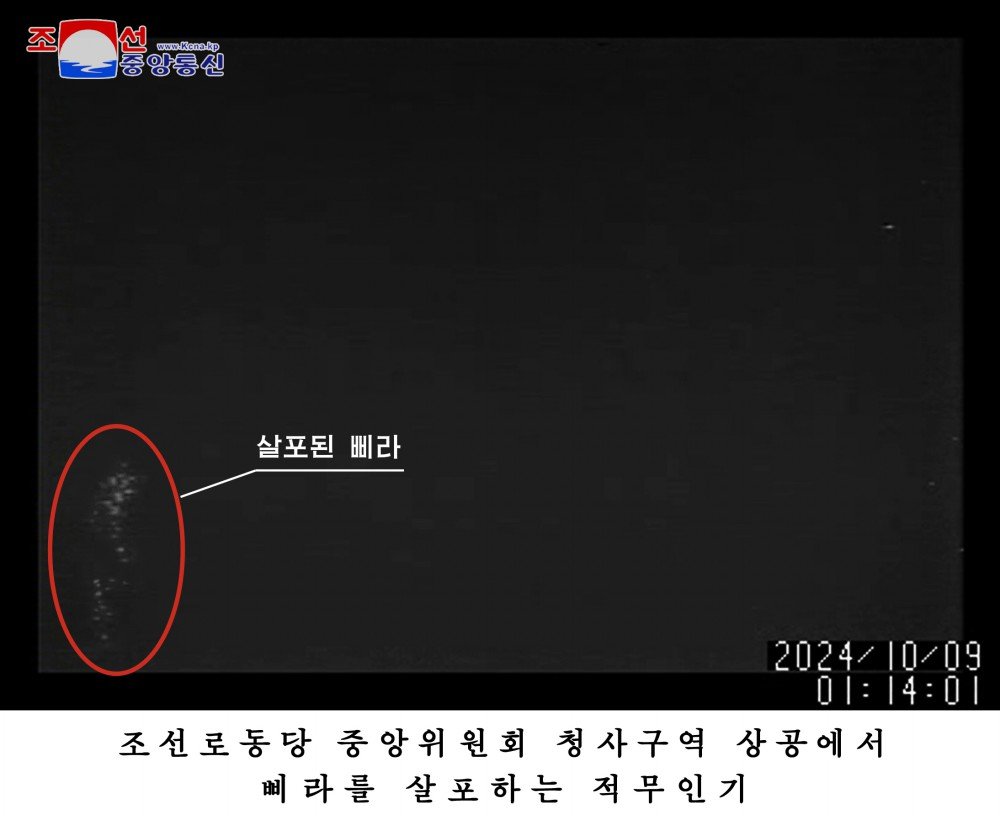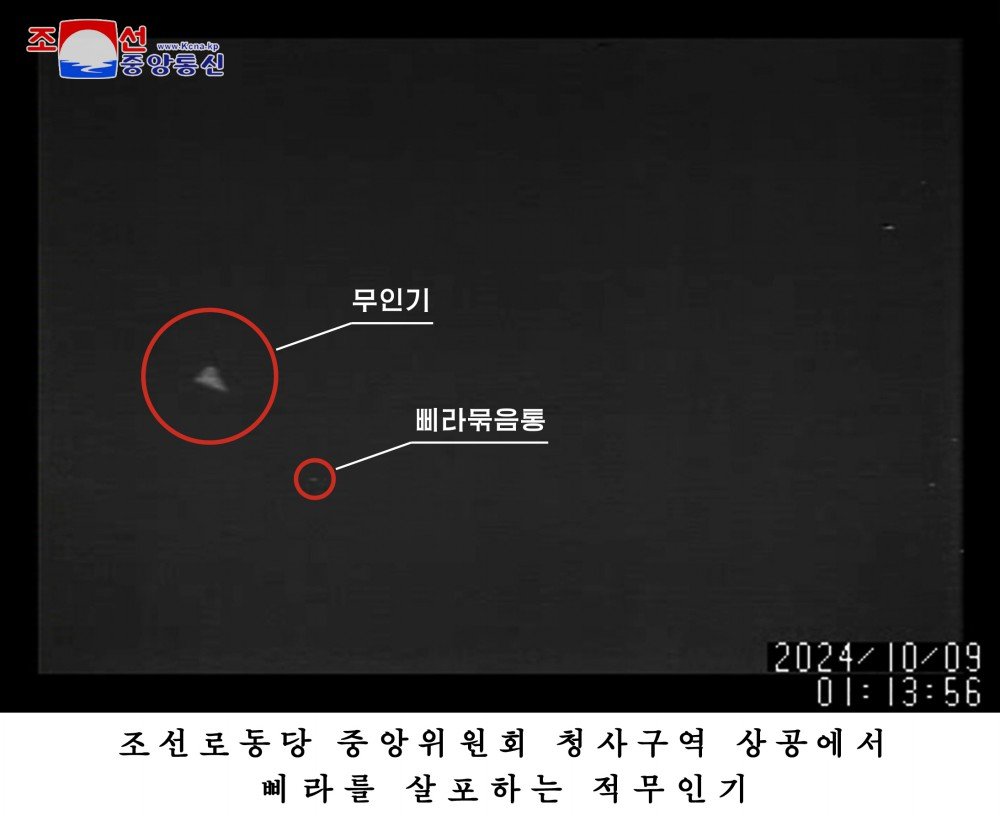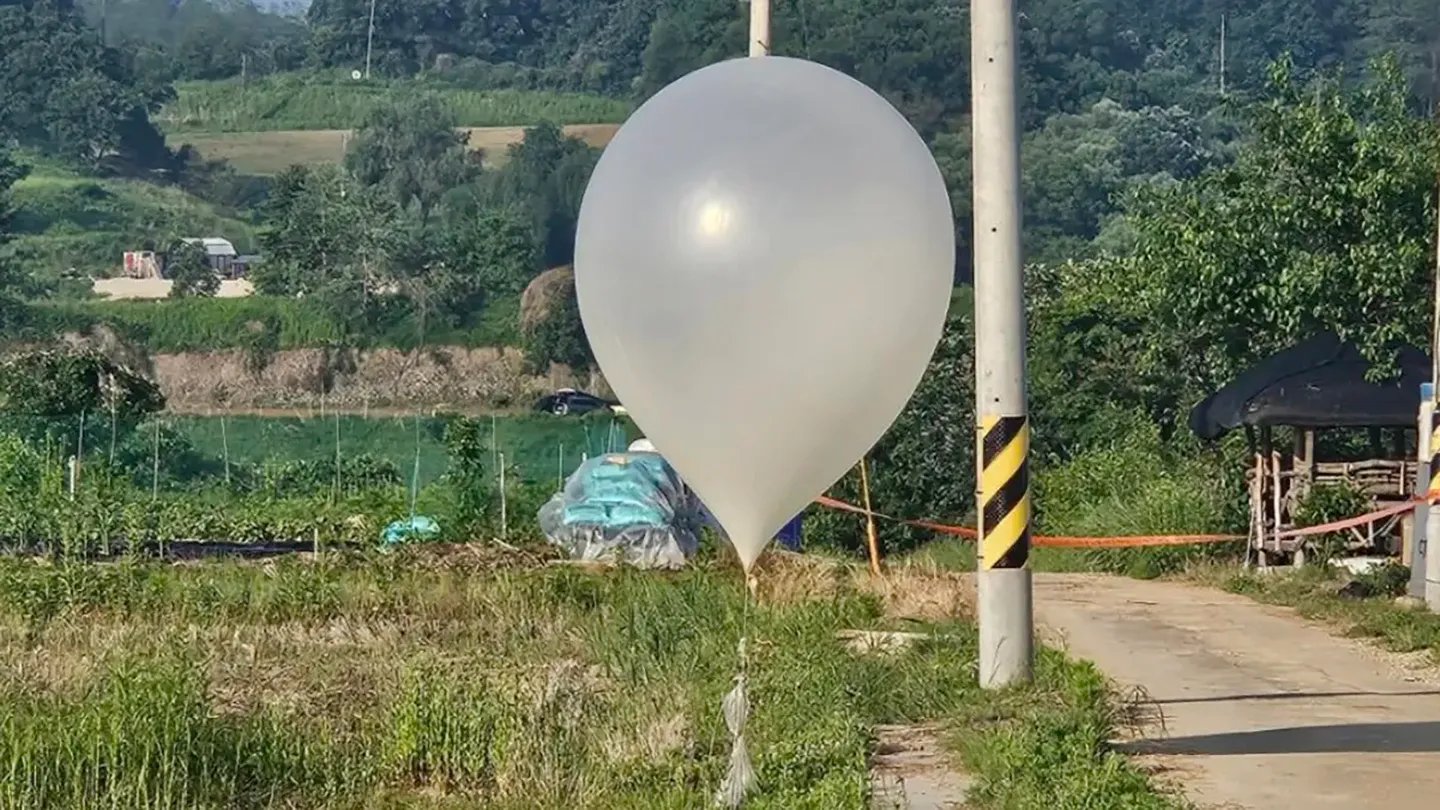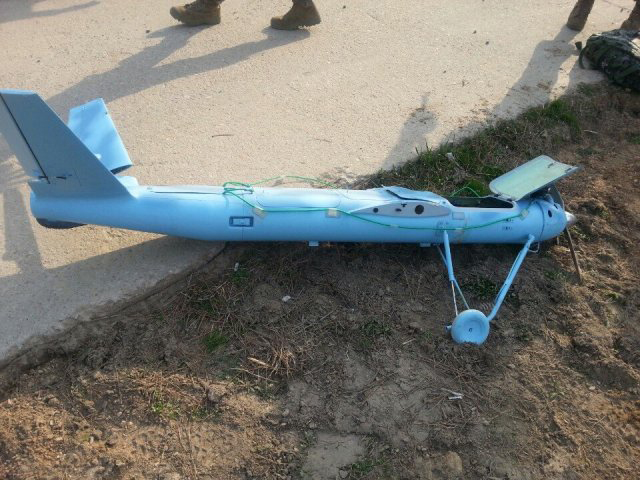North Korea has accused South Korea of using drones to scatter propaganda leaflets over its capital, Pyongyang. The incident today comes after waves of excrement and trash-filled balloons launched by North Korea into the South, which started this summer, and during a period of overall worsening tensions on the peninsula overall.

Photos released by the North Korean state news agency KCNA are of fairly poor quality, but appear to show triangular objects, perhaps broadly similar in configuration to the Israeli Harop long-range one-way attack drone. Other views suggest not so much a delta-wing platform as a swept-winged one, reminiscent of the U.S.-made ScanEagle long-endurance, low-altitude drone. It could also be the case that a variety of different drones were used for the airdrop mission.
These drones, in turn, are shown seemingly releasing small objects. The news agency describes these objects as “scattered leaflets,” or as “bundles of leaflets.”


A separate photo shows a close-up of what’s claimed to be one of the drone-delivered leaflets. The black, yellow, and white leaflets compare the economic situation in the South to that in the North and also criticize North Korean leader Kim Jong Un.

North Korea said that South Korean drones were responsible for scattering a “huge number” of leaflets with anti-North propaganda over its capital. Officials in Pyongyang described the action as a “political and military provocation that could lead to armed conflict.”
According to the North Korean Foreign Ministry, the drone incursions occurred on several nights this week — October 3, 9, and 10 — each time penetrating airspace over Pyongyang.
The North Korean Foreign Ministry today said that the latest incursion demanded retaliatory action, according to KCNA.
“The ROK [South Korea] should immediately stop such irresponsible and dangerous provocation that may cause an armed conflict and lead to a war between the two sides,” the ministry was quoted as saying.
The has issued a strongly worded statement to the South, saying there will be no more warnings and the North will immediately take action if another drone is sent from the South over its territory.
Meanwhile, South Korea’s Joint Chiefs of Staff said they could not confirm the North’s accusations. They did, however, bring up the North Korean practice of sending balloons into South Korean airspace.

The Joint Chiefs of Staff said they “cannot confirm the truth of North Korea’s claims,” but added that “All responsibility for the recent series of events” lies with the North.
South Korea said that more balloons were launched toward its airspace today, citing this as more evidence of the North’s “despicable, low-grade and internationally embarrassing acts of filth and garbage balloons and other provocations.”
The North Korean balloon campaign began in May of this year and has so far seen thousands of balloons drift into the South’s airspace.
North Korea has admitted responsibility for the balloons but argues that these are a response to balloons launched from the South by activists and North Korean defectors in South Korea. The balloons from the South allegedly carry mainly aid parcels and leaflets condemning the North’s leadership.
It may be the case that the drones were also sent by activists or defectors, but this would be a very sophisticated operation for groups of volunteers — at least compared to drifting balloons. In particular, the drones would need considerable range, payload and navigation capabilities to have specifically targeted Pyongyang, and to have done so over several nights.
An official at the South Korean Joint Chiefs of Staff has said that there needs to be an investigation into whether the drones were sent into the North by a private group, according to a report from South Korea’s Yonhap news agency.
In the past, we looked at how the North Korean balloon campaign demonstrated the potential for craft of this type to also be used to deliver deadly payloads, such as explosives, incendiary devices, radioactive materials, or chemical weapons. When the campaign began earlier this year, South Korea’s military reportedly deployed “chemical, biological, radiological and nuclear response teams and bomb disposal units to collect the objects for a detailed analysis.”
The same concerns, of course, apply to drones.
The ability of drones — sophisticated or otherwise — to penetrate the heavily defended airspace over the North Korean capital will surely be a considerable worry to officials there and would appear to highlight deficiencies in the North’s best air defense coverage.
As with the balloons from the North, the drones over Pyongyang don’t appear to have caused any major damage or contained anything dangerous, but the event will still have been alarming for the North — evidenced by the ferocity of its official statement in response.

Furthermore, while balloons are far from a precision threat and provide more of an annoyance than anything else, drones are very different. As TWZ has discussed for years, a drone that’s able to deliver a lethal payload or long distances, for example, with considerable accuracy is now well within the reach of non-state actors.
At this stage, it remains unclear whether the drones in question were launched by private organizations or if they originated from the South Korean military or government, or if they were the result of a more shadowy ‘hybrid warfare’ effort. Provided the drones were not launched from the sea, Seoul should’ve been able to detect them fairly easily and know where they came from, raising questions about the theory of a non-state origin. Were the drones launched across the land border, they would also have to pass through some of the most heavily surveilled and best-defended airspace on the planet.
A government operation seems far more likely, considering these were fairly sophisticated drones, able to fly long distances before dropping their payloads. South Korea certainly has drones with the capability and North Korea does too, as they increasingly invest in more advanced unmanned aircraft.
Nevertheless, they could still have been adapted from commercial types just like Ukraine did with its Alibaba-type kamikaze drones, one of which is seen below.

Wherever the drones originated from, the incident is a breach of international law and one that could potentially harm North Korean citizens and infrastructure. There is even a slim possibility that North Korea orchestrated the drone campaign, for whatever reason.
North Korea has a track record of launching its own drones against the South. In December 2022, a North Korean drone entered a no-fly zone around the office of the South Korean president, according to military officials in Seoul. In response to this and earlier incursions, the South stepped up its anti-drone capabilities, including developing airborne laser weapons and signal jammers. In the meantime, the armed forces use aircraft, including KA-1 fixed-wing turboprops and MD500 helicopters, as well as soldiers armed with anti-drone jammer guns, to counter drones from the North. The truth is the North’s drone incursions over the South go back many years.

With the two Koreas still technically at war, and with officials from both countries already locked in a hyperbolic war of words. Just a few days ago, the North said it would sever road and railway access to the South, to make sure the two countries are “completely separate.” Incidents like this also raise tensions and, with them, the risk of an overreaction or a misunderstanding leading to a much more serious escalation.
The latest incursion is perhaps particularly concerning bearing in mind that a military campaign launched by the South against its neighbor would very likely also see extensive involvement by drones, including to confuse and overwhelm air defenses. This would be especially relevant ahead of any air campaign directed against Pyongyang, such as decapitation strikes against the leadership.
With that in mind, it’s possible that the drones were also intended to serve as a warning from the South — whether sanctioned by official channels or not, or even some kind of trial run. Pyongyang’s angry response is predictable, but it remains to be seen exactly what kind of reaction will be prompted by any further such drone incursions.
Contact the author: thomas@thewarzone.com
